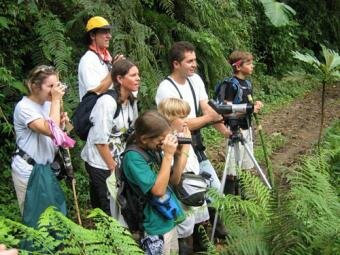A team of mathematical experts have said that 1729, which is also known as the Ramanujan-Hardy number, is linked to aspects of string theory and...

Several tourists today are drawn towards the idea of spending their holidays in far-flung places. They think that their money could help the local people and wildlife. But a new research has shown that increasing tourism in such places put animals at risk of being eaten.
Professor Daniel Blumstein, of the University of California, said in a statement that recent data has shown that protected areas around the globe receive eight billion visitors every year.
“This massive amount of nature-based and eco-tourism can be added to the long list of drivers of human-induced rapid environmental change”, he said.
Prof. Blumstein said that the new report published in the journal Trends in Ecology & Evolution showcases a new way of thinking about possible long-term effects of nature-based tourism.
It will also encourage scientists and reserve managers to take into account these harmful impacts to assess the sustainability of a type of tourism, which typically aims to enhance, not deplete, biodiversity.
The report majorly revolves around the point that human presence changes the way animals act. These changes in animal behavior might spill over into other parts of their lives. Also ,these chances can put animals at risk.
When animals interact in benign ways with humans, they may let down their guard, said Prof. Blumstein. Aid animals get used to feeling comfortable with humans nearby, they may become bolder in other situations, he said.
Furthermore, he said that if this boldness transfers to real predators, then they will suffer higher mortality when they encounter real predators.









